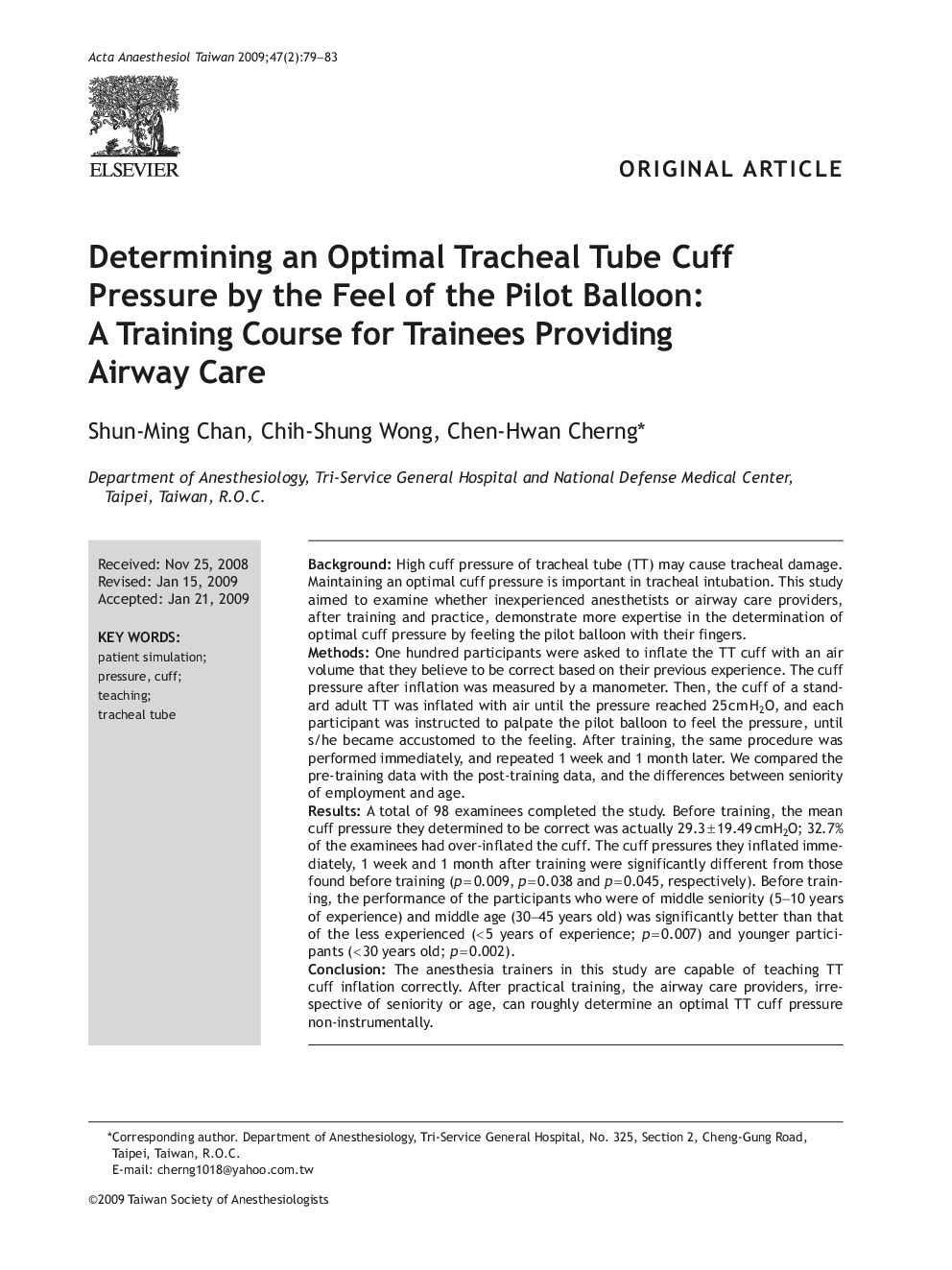| Article ID | Journal | Published Year | Pages | File Type |
|---|---|---|---|---|
| 2741604 | Acta Anaesthesiologica Taiwanica | 2009 | 5 Pages |
BackgroundHigh cuff pressure of tracheal tube (TT) may cause tracheal damage. Maintaining an optimal cuff pressure is important in tracheal intubation. This study aimed to examine whether inexperienced anesthetists or airway care providers, after training and practice, demonstrate more expertise in the determination of optimal cuff pressure by feeling the pilot balloon with their fingers.MethodsOne hundred participants were asked to inflate the TT cuff with an air volume that they believe to be correct based on their previous experience. The cuff pressure after inflation was measured by a manometer. Then, the cuff of a standard adult TT was inflated with air until the pressure reached 25 cm H2O, and each participant was instructed to palpate the pilot balloon to feel the pressure, until s/he became accustomed to the feeling. After training, the same procedure was performed immediately, and repeated 1 week and 1 month later. We compared the pre-training data with the post-training data, and the differences between seniority of employment and age.ResultsA total of 98 examinees completed the study. Before training, the mean cuff pressure they determined to be correct was actually 29.3 ± 19.49 cmH2O; 32.7% of the examinees had over-inflated the cuff. The cuff pressures they inflated immediately, 1 week and 1 month after training were significantly different from those found before training (p = 0.009, p = 0.038 and p = 0.045, respectively). Before training, the performance of the participants who were of middle seniority (5–10 years of experience) and middle age (30–45 years old) was significantly better than that of the less experienced (< 5 years of experience; p = 0.007) and younger participants (< 30 years old; p = 0.002).ConclusionThe anesthesia trainers in this study are capable of teaching TT cuff inflation correctly. After practical training, the airway care providers, irrespective of seniority or age, can roughly determine an optimal TT cuff pressure non-instrumentally.
